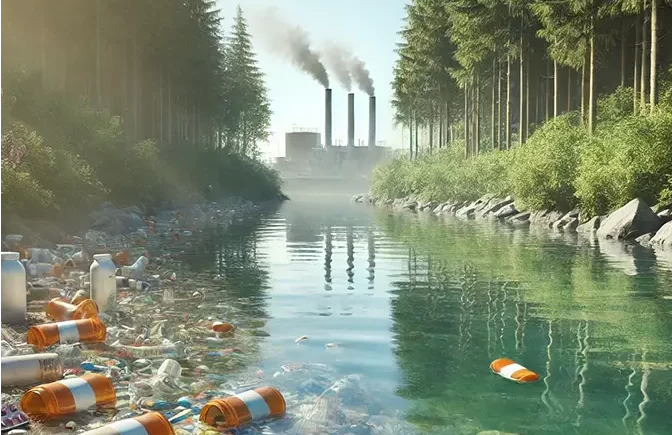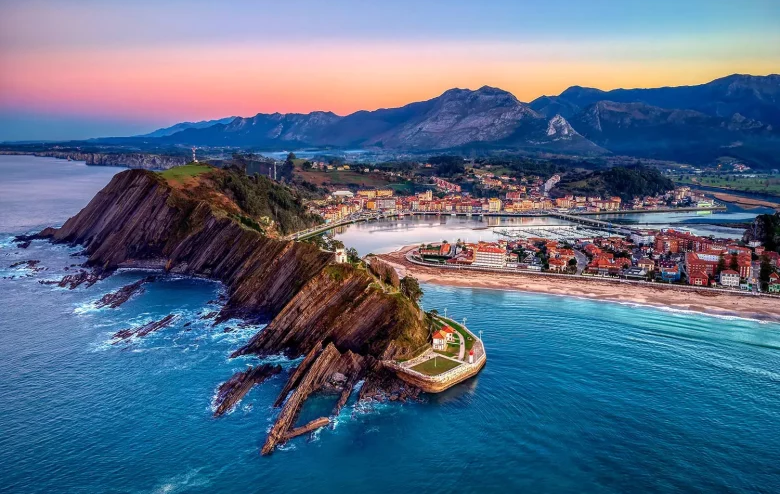Origin and Recharge Area Determination of Springs Around a Lake for Sustainability of the Lake
Downloads
Doi:10.28991/HEF-2025-06-01-03
Full Text:PDF
Downloads
Acreman, M. C., Meigh, J. R., & Sene, K. J. (1993). Modelling the decline in water level of Lake Toba, Indonesia. Advances in Water Resources, 16(4), 207–222. doi:10.1016/0309-1708(93)90039-I.
Chesner, C. A. (2012). The Toba Caldera Complex. Quaternary International, 258, 5–18. doi:10.1016/j.quaint.2011.09.025.
Irwandi, H., Rosid, M. S., & Mart, T. (2023). Effects of Climate change on temperature and precipitation in the Lake Toba region, Indonesia, based on ERA5-land data with quantile mapping bias correction. Scientific Reports, 13(1), 2542. doi:10.1038/s41598-023-29592-y.
Hastuti, Y. P., Nirmala, K., Hutagaol, M. P., Tanjung, D., Kriswantriyono, A., Nurussalam, W., Wulandari, Y. P., & Fatma, Y. S. (2024). Analysis of main components of Lake Toba's water quality in different seasons. Advances in Oceanography and Limnology, 15(1), 1-7. doi:10.4081/aiol.2024.11726.
Hidayat. (2019). Trend of rainfall over Indonesian major lakes from tropical rainfall measuring mission data. IOP Conference Series: Earth and Environmental Science, 303(1), 012019. doi:10.1088/1755-1315/303/1/012019.
Irwandi, H., Syamsu Rosid, M., & Mart, T. (2019). Identification of the El Niño Effect on Lake Toba's Water Level Variation. IOP Conference Series: Earth and Environmental Science, 406(1), 012022. doi:10.1088/1755-1315/406/1/012022.
Sidauruk, P., Prasetio, R., Subehi, L., Pratikno, B., Pujiindiyati, E. R., Satrio, & Laksminingpuri, N. (2023). Lake Toba stratification study with physical, chemical, and isotopic parameter approach. Environmental Monitoring and Assessment, 195(7), 897. doi:10.1007/s10661-023-11455-8.
Sihotang, H., Purwanto, M. Y. J., Widiatmaka, W., & Basuni, S. (2012). Model for Water Conservation of Lake Toba. Journal of Natural Resources and Environmental Management, 2(2), 65–72. doi:10.19081/jpsl.2012.2.2.65.
Irwandi, H., Rosid, M. S., & Mart, T. (2021). The effects of ENSO, climate change and human activities on the water level of Lake Toba, Indonesia: a critical literature review. Geoscience Letters, 8(1), 21. doi:10.1186/s40562-021-00191-x.
Clarke, M. C. G., Ghazali, S. A., Harahap, B., Kusyono, & Stephenson, B. (1982). Geological map of the pematangsiantar quadrangle, Sumatra, scale 1: 250 000. Geological Research and Development Centre, Bandung, Indonesia.
Aldiss, D. T., Whandoyo, R., Ghazali, S. A., & Kusyono. (1983). Geological Map of the Sidikalang and (part of) the Sinabang Quadrangle, Sumatra. Geological Research and Development Center, Bandung, Indonesia.
Catalan, J., Pla-Rabés, S., Wolfe, A. P., Smol, J. P., Rühland, K. M., Anderson, N. J., Kopáček, J., Stuchlík, E., Schmidt, R., Koinig, K. A., Camarero, L., Flower, R. J., Heiri, O., Kamenik, C., Korhola, A., Leavitt, P. R., Psenner, R., & Renberg, I. (2013). Global change revealed by palaeolimnological records from remote lakes: A review. Journal of Paleolimnology, 49(3), 513–535. doi:10.1007/s10933-013-9681-2.
Sidauruk, P., Pratikno, B., & Pujiindiyati, E. R. (2018). Isotopic characterization of precipitation, inflow, and outflow of Lake Toba as a first assessment of lake water balance study. Atom Indonesia, 44(1), 1–7. doi:10.17146/aij.2018.547.
Soeprobowati, T. R. (2015). Integrated Lake Basin Management for Save Indonesian Lake Movement. Procedia Environmental Sciences, 23, 368–374). doi:10.1016/j.proenv.2015.01.053.
Ma'mur, I., Akil, A., & Nganro, S. (2024). Flood Vulnerability of Masamba Urban Area, North Luwu Regency. Ecological Engineering & Environmental Technology (EEET), 25(12), 85-94. doi:10.12912/27197050/193618.
Wesli. (2018). The decline normal water level of Lake Toba for Integrated regional Water Management North Sumatera. ARPN Journal of Engineering and Applied Sciences, 13(1), 360–369.
-, W. (2017). Analysis Water Balance of Lake Toba as Source an Integrated Water Regional Management (IWRM) North Sumatera. International Journal of Engineering and Technology, 9(5), 3945–3953. doi:10.21817/ijet/2017/v9i5/170905182.
Heiderscheidt, E., Tesfamariam, A., Marttila, H., Postila, H., Zilio, S., & Rossi, P. M. (2022). Stable water isotopes as a tool for assessing groundwater infiltration in sewage networks in cold climate conditions. Journal of Environmental Management, 302, 114107. doi:10.1016/j.jenvman.2021.114107.
Canet-Martí, A., Morales-Santos, A., Nolz, R., Langergraber, G., & Stumpp, C. (2023). Quantification of water fluxes and soil water balance in agricultural fields under different tillage and irrigation systems using water stable isotopes. Soil and Tillage Research, 231. doi:10.1016/j.still.2023.105732.
Nigate, F., Van Camp, M., Kebede, S., & Walraevens, K. (2016). Hydrologic interconnection between the volcanic aquifer and springs, Lake Tana basin on the Upper Blue Nile. Journal of African Earth Sciences, 121, 154–167. doi:10.1016/j.jafrearsci.2016.05.015.
Dublyansky, Y. V., Klimchouk, A. B., Tokarev, S. V., Amelichev, G. N., & Spötl, C. (2019). Groundwater of the Crimean peninsula: a first systematic study using stable isotopes. Isotopes in Environmental and Health Studies, 55(5), 419–437. doi:10.1080/10256016.2019.1650743.
Zhang, L., Li, P., & He, X. (2022). Interactions between surface water and groundwater in selected tributaries of the Wei River (China) revealed by hydrochemistry and stable isotopes. Human and Ecological Risk Assessment, 28(1), 79–99. doi:10.1080/10807039.2021.2016054.
Satrio, S., Prasetio, R., Pujiindiyati, E. R., Ramadhani, M. F., & Sidauruk, P. (2024). Characterization of shallow groundwater in coastal aquifer of urbanized area using stable isotope and hydrochemical approaches. In Global Journal of Environmental Science and Management, 10, 123–136. doi:10.22034/gjesm.2024.10.SI.08.
Gibson, J. J., Edwards, T. W. D., Birks, S. J., St Amour, N. A., Buhay, W. M., McEachern, P., ... & Peters, D. L. (2005). Progress in isotope tracer hydrology in Canada. Hydrological Processes: An International Journal, 19(1), 303-327. doi:10.1002/hyp.5766.
Zhao, P., Tang, X., Zhao, P., Wang, C., & Tang, J. (2013). Identifying the water source for subsurface flow with deuterium and oxygen-18 isotopes of soil water collected from tension lysimeters and cores. Journal of Hydrology, 503, 1–10. doi:10.1016/j.jhydrol.2013.08.033.
Valdivielso, S., Vázquez-Suñé, E., Herrera, C., & Custodio, E. (2022). Characterization of precipitation and recharge in the peripheral aquifer of the Salar de Atacama. Science of The Total Environment, 806, 150271. doi:10.1016/j.scitotenv.2021.150271.
Rugel, K., Golladay, S. W., Jackson, C. R., & Rasmussen, T. C. (2016). Delineating groundwater/surface water interaction in a karst watershed: Lower Flint River Basin, southwestern Georgia, USA. Journal of Hydrology: Regional Studies, 5, 1–19. doi:10.1016/j.ejrh.2015.11.011.
Sidauruk, P., Prasetio, R., & Satrio. (2018). Hydraulic interconnections study of Seropan-Ngreneng-Bribin underground rivers in Gunung Kidul karst area using tracer technique. International Journal of Water, 12(1), 39–53. doi:10.1504/IJW.2018.090187.
Souchez, R., Lorrain, R., & Tison, J.-L. (2002). Stable water isotopes and the physical environment. Belgeo, 2, 133–44. doi:10.4000/belgeo.16199.
Craig, H. (1961). Isotopic variations in meteoric waters. Science, 133(3465), 1702–1703. doi:10.1126/science.133.3465.1702.
Putman, A. L., Fiorella, R. P., Bowen, G. J., & Cai, Z. (2019). A Global Perspective on Local Meteoric Water Lines: Meta-analytic Insight into Fundamental Controls and Practical Constraints. Water Resources Research, 55(8), 6896–6910. doi:10.1029/2019WR025181.
Sidauruk, P., Prasetio, R., Pratikno, B., Satrio, S., Pujiindiyati, E. R., Laksminingpuri, N., Aliyanta, B., & Lubis, A. A. (2024). Local Meteoric Water Line as a Reference Line for Water Study in Java Island, Indonesia. AIP Conference Proceedings, 2967(1), 70004. doi:10.1063/5.0192927.
Yang, Q., Mu, H., Guo, J., Bao, X., & Martín, J. D. (2019). Temperature and rainfall amount effects on hydrogen and oxygen stable isotope in precipitation. Quaternary International, 519, 25–31. doi:10.1016/j.quaint.2019.01.027.
Kong, Y., & Pang, Z. (2016). A positive altitude gradient of isotopes in the precipitation over the Tianshan Mountains: Effects of moisture recycling and sub-cloud evaporation. Journal of Hydrology, 542, 222–230. doi:10.1016/j.jhydrol.2016.09.007.
Pang, Z., Kong, Y., Froehlich, K., Huang, T., Yuan, L., Li, Z., & Wang, F. (2011). Processes affecting isotopes in precipitation of an arid region. Tellus, Series B: Chemical and Physical Meteorology, 63(3), 352–359. doi:10.1111/j.1600-0889.2011.00532.x.
Chen, L., Zhu, G., Lin, X., Li, R., Lu, S., Jiao, Y., Qiu, D., Meng, G., & Wang, Q. (2024). The Complexity of Moisture Sources Affects the Altitude Effect of Stable Isotopes of Precipitation in Inland Mountainous Regions. Water Resources Research, 60(6). doi:10.1029/2023WR036084.
Alezabawy, A. K., Eissa, M., & Salem, Z. E. S. (2024). Hydrogeochemical and isotopic investigations of groundwater in the reclaimed desert located between EL Nasr canal and Mariut Tableland, NW Coast, Egypt. Scientific Reports, 14(1), 21172. doi:10.1038/s41598-024-70852-2.
Khan, M. Y. A., & Wen, J. (2021). Evaluation of physicochemical and heavy metals characteristics in surface water under anthropogenic activities using multivariate statistical methods, Garra River, Ganges Basin, India. Environmental Engineering Research, 26(6), 200280. doi:10.4491/eer.2020.280.
Nayak, A., Matta, G., & Uniyal, D. P. (2023). Hydrochemical characterization of groundwater quality using chemometric analysis and water quality indices in the foothills of Himalayas. Environment, Development and Sustainability, 25(12), 14229–14260. doi:10.1007/s10668-022-02661-4.
Hafid, F., Zeddouri, A., Zerrouki, H., Saadali, B., Ghrieb, L., & Sid, A. (2023). Use of Hydro-chemical Tools to Improve Definitions of the North-Western Sahara Aquifer System, Case of Ouargla Groundwater, Algeria. Environmental Research, Engineering and Management, 79(1), 133–147. doi:10.5755/j01.erem.79.1.33057.
Caron, B., Del Manzo, G., Villemant, B., Bartolini, A., Moreno, E., Le Friant, A., Bassinot, F., Baudin, F., & Alves, A. (2023). Marine records reveal multiple phases of Toba's last volcanic activity. Scientific Reports, 13(1), 11575. doi:10.1038/s41598-023-37999-w.
Suzuki, R., Takahashi, H. G., Matsumoto, J. (2011). Observational Study on Regional Climate of Izu Oshima Island, Tokyo. Geographical Reports of Tokyo Metropolitan University, 46(December), 53–62.
Poage, M. A., & Chamberlain, C. P. (2001). Empirical relationships between elevation and the stable isotope composition of precipitation and surface waters: Considerations for studies of paleoelevation change. American Journal of Science, 301(1), 1–15. doi:10.2475/ajs.301.1.1.
- The authors retain all copyrights. It is noticeable that authors will not be forced to sign any copyright transfer agreements.
- This work (including HTML and PDF Files) is licensed under a Creative Commons Attribution 4.0 International License.














